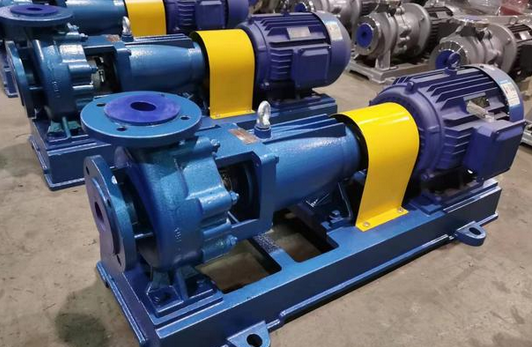Selection of centrifugal pumps for pickling wastewater
The selection of centrifugal pumps for pickling wastewater requires comprehensive consideration of multiple factors, including the nature of the wastewater, flow rate, head, corrosion resistance of the pump, convenience of operation and maintenance, etc. The following are some specific selection principles and steps:
1. Selection principles
Corrosion resistance:
Pickling wastewater is usually highly corrosive, so the selected centrifugal pump must have good corrosion resistance. The pump body, impeller, pump cover and other parts in contact with the medium should be made of corrosion-resistant materials, such as fluoroplastics, stainless steel, etc.
Flow and head:
Determine the flow and head of the required centrifugal pump according to the treatment volume and transportation distance of the pickling wastewater. The flow and head of the selected pump must meet the maximum load requirements of the actual work.
Operation and maintenance:
The ease of operation and maintenance of the pump should be considered when selecting. Pumps with simple structure, easy disassembly and maintenance are preferred.
Energy saving and efficiency:
From the perspective of energy saving, high-efficiency pumps should be selected, and it should be ensured that the operating point of the pump is in the high-efficiency zone for a long time.
NPSH:
To prevent cavitation, the required cavitation amount NPSHa of the selected pump should be less than the NPSHHa of the device.
2. Specific selection steps
Determine the nature of the wastewater:
Understand the composition, concentration, pH value and other parameters of the pickling wastewater to determine its corrosiveness and other special properties.
Collect original data:
Collect the original data such as flow rate, head, and relevant parameters of the equipment before and after the pump required in the treatment of pickling wastewater.
Select the type of pump:
Based on the nature of the wastewater, flow rate and head requirements, preliminarily determine the use of single-stage single-suction or other types of centrifugal pumps.
Consider corrosion-resistant materials:
Prioritize materials with good corrosion resistance, such as fluoroplastics, stainless steel, etc., to ensure the long-term stable operation of the pump in pickling wastewater.
Compare different models:
On the premise of meeting the basic requirements, compare the performance, price, operation and maintenance convenience of different models of centrifugal pumps, and select the most suitable pump type.

Calculate and verify:
After selecting the pump type, perform relevant verification calculations to verify whether the selected pump meets the use requirements. For example, whether the required operating point falls in the efficient working area, whether NPSH is greater than NPSHa, etc.




